FDA's High-Tech (and Still Confusing) Nutrition Labels for 2016
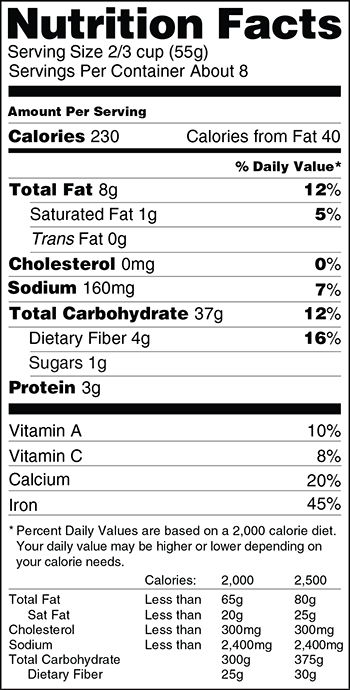

For those who find that trying to read a nutrition label on a package of food is something akin to trying to decipher the jargon on last year’s climate change report, good news: the FDA now hears you.
This week the federal government proposed some changes to the 1993 nutrition labeling system that we find on packaged foods in supermarkets. They aren’t huge and they aren’t jazzy, but even my nutritionist dad would have been impressed with the tweaks.
After all, if you want someone to remember the information, give them the facts first, right? Most of us are wowed by numbers, not by scientific names for the pieces and parts that make up our food. To many of us, 5 percent saturated fat speaks a lot more plainly than "saturated fat 1 gram."
The newest edition to the label is the "Added Sugars" line, which is no doubt directed at educating us about the sugar that often gets added to our food during preparation. It’s a great idea, especially for diabetics who must avoid additional sugar.
And, for better or worse, they’ve revamped the serving sizes for larger appetites. The old serving sizes didn’t always seem to make sense to every diet, age or body size. But unfortunately, the new approach may not either. If the government wants us to be aware of the amount we’re eating in sugars, fats, etc., why change the portion sizes on labels just because “people are eating larger serving sizes”?
The new label proposes changing the portion size to the amount that is normally eaten these days in a serving. So that 12-ounce bottle of orange juice will now be considered one serving because we’ve been drinking it that way as a snack (and because the manufacturer packaged it that way).
"These updates would reflect the reality of what people actually eat, according to recent food consumption data," says the FDA. "By law, serving sizes must be based on what people actually eat, not on what they 'should' be eating."
But how will that help people understand portion sizes? Isn’t it better to encourage manufacturers to tailor that packaging to what should be a normal portion for the most healthy portion size?
If a candy bar that has 300 calories and 20 grams of fat is labeled as one serving, will we really find the will power to say the government's wrong and put away the rest of the candy?
The proposed labels aren’t perfect, but according to the FDA consumer update, they aren’t chiseled in stone, either. Yet. The FDA is asking for input which you can do at its official docket page. Let them know what really speaks to you. After the 90-day comment period, companies have two years to implement the changes.
Images: FDA
Forest Stewardship Council Pulls IKEA Certification for Violations
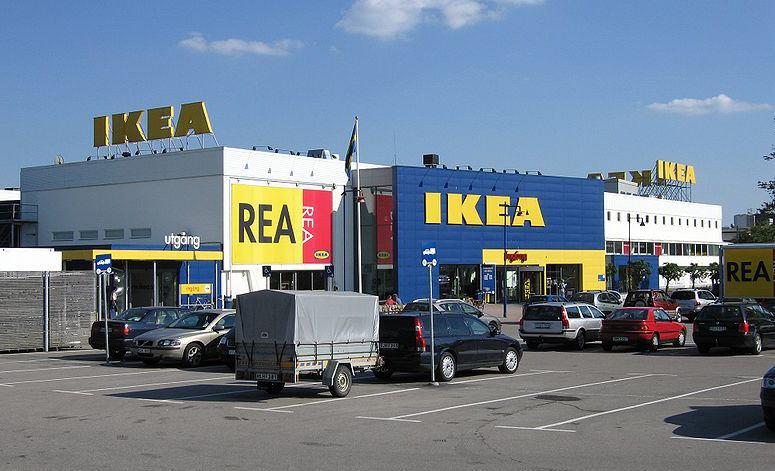

The Forest Stewardship Council (FSC) has withdrawn its certification of Swedwood, a forestry subsidiary of furniture giant IKEA (which also goes under the names Swedwood Karelia and IKEA Industry).
According to the FSC, a recent trip to the Karelia Forest in Russia revealed that the company has been harvesting old-growth trees in the protected regions of the Russian forest, which is located near the Russia-Finland border.
The subsidiary has leases to log 700,000 acres, as long as it does not cut down old-growth trees and trees in specified areas. According to FSC’s report there were “major deviations” from regulations that included the suspected harvesting of 600-year-old trees.
IKEA’s profits last year exceeded $4 billion. Approximately 1 percent of the world’s wood supply is said to be harvested by the Swedish furniture company.
According to the Swedish environmental organization Protect the Forest, concerns about IKEA’s operations in Karelia date back more than a year. According to PTF’s website, a petition containing 180,000 signatures from environmental organizations was submitted to IKEA about two years ago "with demands and suggestions for how Ikea should transform their forestry and preserve valuable old-growth forests.” IKEA was encouraged to work with environmental experts who were formulating a master plan for the protected forests of Karelia.
In fact, as we reported in December 2012, questions were already being raised about Swedwood’s logging practices, which the Global Forest Coalition said included logging the areas that are now being investigated in 2014.
IKEA issued a statement downplaying the relationship of the suspension to environmental concerns. Per an IKEA spokesperson, "[the] deviations mainly cover issues related to facilities and equipment for our co-workers, forestry management as well as training of our forestry co-workers." No further statement could be found on its website regarding the suspension, but a company spokesperson told MailOnline that "[the company's] full focus is now on correcting the remaining deviations and reinstating the FSC certificate urgently," saying that the furniture giant sees the suspension as "highly temporary."
PTF, however, says that FSC issued the suspension because of environmental violations that included included “logging of key biotopes, insufficient dialogue, lack of environmental consideration and work environment issues.”
“But unfortunately, the audit report does not address clearly enough our main concern over the FSC-certified logging of intact tracts of natural forests,” said Linda Ellegaard Nordstrom, a director of PTF. “The report raises several deficiencies, but does not describe the main problem, which is that pioneer exploitation, with fragmenting and breaking into the last intact forest landscapes and tracts, does not fit to FSC's principles and criteria. Thus we believe that the FSC label is still far from being a guarantee for sustainable forestry.”
Swedwood Karelia announced on Feb. 11 that it was suspending operations in the Karelia Forest and would be leaving the area. The news prompted some scathing criticism from several regional environmental organizations, including Friends of the Earth Sweden.
"IKEA’s departure from this part of Karelia, with its high concentration of old natural forest, clearly shows that it is not ecologically, socially, or economically sustainable to harvest old-growth forest, which are a non-renewable resource,” said the organization’s representative, Klas Ancker.
It also has prompted some concerns by PTF, as to the fate of a fully-operational mill in the Russian Republic of Karelia.
“Since IKEA now intends to leave Karelia, our opinion is that they have a great responsibility to make sure that whoever possibly buys their factory has a genuine environmental commitment and does not accept timber from intact forests,” said Ancker. “IKEA owes this to Karelia.”
Update: An IKEA spokesperson sent Triple Pundit the following statement via email: "IKEA does not use 600 year old trees in our products. The average age of the trees we are cutting in the lease is 160 years... A majority of the deviations have already been corrected and our full focus is now on correcting the remaining deviations and reinstating the FSC certificate urgently. We take our responsibility for the forests and the people who work there very seriously and we appreciate that correcting the deviations will improve the way we manage the forest in Karelia."
Image of IKEA store in Sweden: Christian Koehn
Report: Fugitive Emissions Cancel Out Net Climate Benefit of Natural Gas


Natural gas has frequently been described as a bridge fuel to a low-carbon energy future for at least a couple of promising reasons. Firstly, there's an abundance of the stuff, and secondly burning natural gas produces only about half the CO2 emissions as coal. In theory, at least, replacing coal-fired power stations with natural gas ones, and converting large trucks from diesel to natural gas, are ways to reap significant real-time climate benefits.
That said, however, there is a general Achilles-heel in the whole natural gas energy system, which is that it's leaky. Leaks occur not only in production of natural gas, but also in storage and transmission of it, and because natural gas is 80 percent methane (CH4), which is around 30 times more potent as a greenhouse gas than CO2, when it leaks, it's a big deal.
And it turns out, it's a bigger deal than previously thought. A new report by Stanford University finds that America's natural gas system is much more leaky than previously estimated, and maybe up to 50 percent more so than the EPA estimates. Of course, this is pretty significant because the benefits of burning lower-CO2 natural gas as an alternative to coal and oil, must be weighed against the deleterious effects of extensive methane leakage--but how bad is it? And is it bad enough that natural gas cannot be considered a viable bridge fuel to a lower carbon future?
Climate Progress cites the Stanford report in an article which addresses the methane leakage problem extensively, and provides data on various studies which suggest natural gas production, transmission and end-use leakage could be up to 7.1 percent of the natural gas extracted. At this rate, Climate Progress reports, it would take a natural gas power station 100 years to reap a greenhouse gas benefit over a coal fired plant--or as their headline points out--"by the time natural gas has a net climate benefit you'll likely be dead and the climate ruined." Uplifting stuff, indeed!
The Stanford report suggests one of the reasons the EPA has underestimated leakages is that emissions testing at wells and processing plants were based on operators participating voluntarily, and unsurprisingly, there haven't been too many volunteers. Stanford points out that for one study, the EPA asked 30 gas companies to cooperate with emissions-rates sampling, and only six of them let the EPA on site. Likely, the more unscrupulous operators are those most likely to have gone unaccounted for in determining accurate estimates.
Ideally, we would transition from coal to renewable energy without passing through natural gas as a bridge fuel, but let's face it, that's pretty unlikely to happen with low-cost natural gas production going on right now, and going through the roof. So, does this mean we're doomed with the apocalyptic prediction which Climate Progress suggests? Maybe not, because although leakage is higher than previously believed, it's not to say it has to be.
Indeed the World Resources Institute (WRI) seems to be a little more optimistic, in their article "Capturing The Fugitives: Reducing Methane Emissions from Natural Gas," WRI recognizes the risks of natural gas's so-called "fugitive emissions" problem, and concurs that leakage rates are currently in the range of 2 to 3 percent, and even as high as 7 percent. However, their own research finds that reducing methane leakage to 1 percent or less of total production, would provide a net climate benefit over any time horizon. Furthermore, WRI asserts, encouragingly, that a 1 percent leakage target is reachable through existing state and federal policies and with widespread adoption of existing and cost-effective technologies.
If WRI are right about this, it's great news--no new laws are required and no new technologies need to be invented. That being the case, the leakage problem may just boil down to effective enforcement. WRI explains the details of what can be done to mitigate leaks in their article--and perhaps one of the most significant points made is that leaked methane is in fact leaked profits; or put another way, the 7 percent of leaked methane is energy that could otherwise be sold by the companies who are extracting the natural gas. It seems obvious that off-gassing a salable product is foolish, and if such companies invested in the technology to hit the 1 percent leakage target, WRI states, it would take only three years or sooner for that investment to pay for itself.
Since natural gas is, by all accounts, projected to remain an important fuel in the energy mix for some time to come, there appears to be no excuse in failing to take advantage of its lower carbon benefits, by preventing unnecessary leakage. At least then, while advocating for increased use of renewable energy, natural gas could at least certainly be a better choice than coal and potentially a viable bridge fuel too.
Image Credit: Gerry Dincher
Energy Efficiency Contributes to Dwindling Electricity Demand, Study Says


If your business is selling electricity, then a new analysis by the American Council for an Energy-Efficiency Economy showing flatlining or even falling demand is not encouraging news.
In June 2013 Ron Binz spoke about disruptive forces facing the utility industry. He was Obama’s nominee for head of the Energy Regulatory Commission until Mr. Binz dropped out in the face of pretty intense industry pressure. One of the main disruptions leading to troubles for utilities is waning sales growth in the electricity sector. It’s a problem. Last year in Ann Arbor, Binz showed a chart depicting less than 2 percent growth in energy demand going forward. However, a new report shows an even worse picture for the traditional purveyors of electricity. Use has actually been falling since 2007 and continues to do so.
Electricity use peaked in 2007 and then started to fall year after year. Electricity use in the U.S. is 1.9 percent below the 2007 peak. And in 2013 demand was lower than in 2012. Some experts argue that this negative-to-zero growth in demand is mostly because of the national recession. And for the deep recessionary years, that may have been true.
However, as the Great Recession falls further into the rear view mirror, electricity demand continues to stay flat or even decline even as the economy grows.
The ACEEE analysis explored electricity use trends going back to 1993 with a detailed focus on usage between 2007 and 2012. The study explored factors such as changes in GDP, changes in pricing, weather changes, and energy efficiency programs and policies. Between the focus years of 2007 through 2012 the dominant factors causing change in electricity usage in residential and commercial sectors appear be energy efficiency programs and policies and warmer weather. However, ACEEE indicates that there is insufficient data to understand what's going on in the industrial sector.
Regarding energy efficiency, Binz suggested we think of it this way: Today a refrigerator uses little more electricity than a light bulb did a decade ago. And a light bulb uses as much electricity as a calculator did a decade ago. That advance in efficiency isn't going backward and people aren't going to start opting for energy-hog fridges anymore. As efficiency settles in from policy changes and industry standards, it's going to put continually downward pressure on demand.
The exact reasons for weak electricity demand may not be 100 percent certain. However it's certainly in line with the idea that utilities are facing an upheaval in the electricity market. It's just one of the three major disruptive challenges:
- Flat or even negative growth in electricity demand
- Shrinking access to credit
- New technologies, such as rooftop solar
Rooftop solar was recently cited by utilities as a potential "mortal threat" to the current business model. As the market shrinks due to reduced demand it doesn't take much rooftop solar to tip the scales of that demand into constant shrinkage. That makes it mighty hard to pay back investment on massive and expensive coal, nuclear or natural gas plants. That, in turn, could make credit and investment for large centralized power plants even harder to find.
Utilities may need to start considering serious changes to the business model they've kept for so long.
Image Credit : ACEEE Website
Chick-fil-A Commits to Serving Antibiotic-Free Chicken
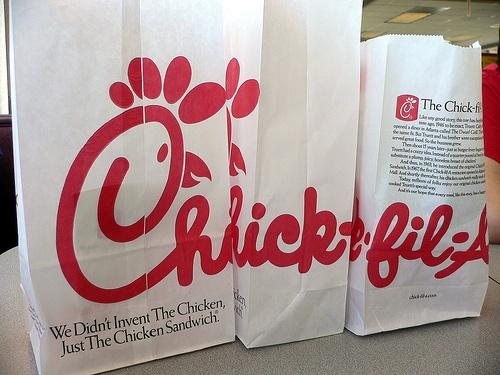

Within five years, Chick-fil-A plans to serve only chicken raised without antibiotics in its 1,800 restaurants nationwide—in response to consumer demand for greater transparency in food production and safety. There are several restaurants and chicken processing companies that are responding to consumer skepticism about treating all chickens, healthy or not, with antibiotics.
Pew Health Initiatives estimates 80 percent of antibiotics use in this country is for meat and poultry. A staggering 29.9 million pounds of antibiotics were sold in 2011 for meat and poultry production, increasing the risk of bacteria with resistance to antibiotics. Public concern about the widespread use of antibiotics in livestock and its impact on dangerous bacteria is mounting and fueling the demand for alternatives.
"The Chick-fil-A move does signal an important market change in responding to what consumers have been demanding for some time—that we stop feeding healthy animals daily antibiotics," said Urvashi Rangan, director of the food safety and sustainability group at Consumer Reports.
Although this is an important step, Chick-fil-A is not the first national chain restaurant to undertake such an initiative. Both Chipotle and Panera Bread have been serving antibiotic-free meat for more than a decade and were pioneers in the movement. Chipotle even went a step further by requiring suppliers to comply with "humane housing standards for chickens."
“Chick-fil-A’s announcement to serve chicken raised without antibiotics in five years is a bold first step," said Janice Neitzel, principal of Sustainable Solutions Group, an organization that guides companies in responsible sourcing of animal proteins. "To do this right, they’ll want to ensure no antimicrobials are used to prevent disease, but only used when medically necessary to treat disease. At the same time, Chick-fil-A should look at issues of animal husbandry and genetics as next steps.These are important issues which Sustainable Solutions Group understands."
Modern boiler chickens have been over-selected for rapid growth, resulting in genetic bone issues including twisted and contorted feet and legs. This can result in chronic pain, explained Neitzel in an interview with Triple Pundit. Animal welfare policies and sourcing guidelines can target these issues.
"The more people are raising the bar, the more the food chain will shift, and the more consumers will become knowledgeable about issues surrounding food production and why these things matter," said Chris Arnold, a Chipotle spokesman. Serving antibiotic-free meat is raising the bar, but additional issues exist that would reduce the need for antibiotic use, such as cleaner and roomier living conditions for industrial chicken producers, Rangan added.
Serving antibiotic-free protein does create sourcing challenges, as demand outstrips supply of such products from the producers. Some of the first restaurant chains were driven by carefully listening to customers. "When we began to serve meat raised without antibiotics, we were driven by two things: taste and a belief in simpler, cleaner ingredients," said Scott Davis, Panera's chief concept officer. "At the beginning, there wasn't a national supply available, but our customers pushed us to continue the journey."
Chicken producers, including Tyson Foods and Perdue Farms have been joining the trend, with the creation of antibiotic-free chicken brands. Tyson Foods recently introduced NatureRaised Farms and Perdue introduced Harvestland, both antibiotic-free product lines.
Image credit: Flickr/Link576
Sarah Lozanova is a regular contributor to environmental and energy publications and websites, including Mother Earth Living, Green Building & Design, Triple Pundit, Urban Farm, and Solar Today. Her experience includes work with small-scale solar energy installations and utility-scale wind farms. She earned an MBA in sustainable management from the Presidio Graduate School and she resides in Belfast Cohousing & Ecovillage in Midcoast Maine with her husband and two children.
Etsy's Recipe for Purpose: Creating a Culture Around Mindfulness


Submitted by Guest Contributor
By Aaron Hurst, CEO, Imperative
When you don’t have a lot of cash to attract the best talent, you might as well try the temptation of purpose.
Forget how clichéd that sounds and you have Etsy, which has actually been able to compete with cash-rich companies like Google and Facebook for talent based on that premise. As Matt Stinchcomb, Etsy’s VP of Values and Impact, told me, they don’t have “gobs” of money like other companies but they’re rich in community.
Matt and Etsy CEO Chad Dickerson, both profiled on the first-ever Purpose Economy 100, have built the largest online marketplace of handmade and vintage items on the framework of e-commerce married with a sense of local community. Nine years into its existence, not only has Etsy created a means for people to bring their craft to a marketplace, providing added integrity to their brand of commerce, the company has also fostered a strong, caring internal culture.
As Matt reveals, the company bases its mission and ethics  around a mindful, humane and transparent business, with a commitment to continually creating opportunities for its employees, sellers and community members.
around a mindful, humane and transparent business, with a commitment to continually creating opportunities for its employees, sellers and community members.
“My job is giving people the means and the desire to make mission-, vision- and values-aligned decisions,” says Matt, whose main preoccupation is to develop and maintain company culture. “Knowing and caring and doing are three different things, and I feel like […] you can understand and know the values. That’s the first step: the mission, vision and values. The second is […] internalizing that, and the third is … making the decisions within that context.”
How we each internalize and personalize the pillars of our work is open to interpretation, as it should, he says. “You can’t force a culture. You’ve got to feed the yeast and just let it happen.”
Looking for some of the key ingredients to the “secret sauce” behind their success in attracting and retaining talent? Matt offered six:
1. Begin with an organizational mission that is compelling.
Etsy’s mission is to re-imagine commerce in ways that build a lasting and fulfilling world. The opportunities that that mission implies are endless, not only for those who want to have a positive impact but also for those candidates who align values, compensation and a constantly growing career.
2. Build a community of customers, employees and supply chain and unite them all in your mission.
Etsy blurs the lines and includes all its stakeholders in its community. That ensures everyone is united in a shared vision and passion. Etsy staffers make sure that anyone with a creative pursuit is able to find an outlet of expression within its community and network. The organization fosters participation, so everyone is engaged and shares in its processes and success.
3. Create space in your office for your community.
Etsy has its own school that helps employees with personal growth and professional development. Employees are encouraged to participate in and lead workshops  on creative enterprises like photography, screen-printing, jazz and even mindfulness. Not only do these workshops occur during business hours, Etsy also cover the costs.
on creative enterprises like photography, screen-printing, jazz and even mindfulness. Not only do these workshops occur during business hours, Etsy also cover the costs.
“We allow groups of people into our offices all the time for these workshops…We have a person whose job is to basically bring the community in as well as take employees to seller studios to meet with them, to understand them. We have a whole testing department that makes sure that we’re getting sellers’ input on everything. We do a lot to make sure that that connection, that relationship, is active.”
4. Embrace your extended community.
Just like its online platform, Etsy believes in cultivating relationships with other organizations in its neighborhood and welcomes employees to bring their children to work. Rather than operate in an isolated campus or an ivory tower, their office is part of the neighborhood. Etsy employees also host meet-ups of local Etsy sellers when they travel home to scale their community and support teams on a local level by providing resources.
5. Foster openness and transparency.
Etsy hosts a town hall every quarter to share exactly what they’re working on and why. There is a live studio audience, and people – customers, suppliers, employees, etc. – watching online are also invited to submit questions. The company’s financial information is also published monthly on the site’s blog. “We try to keep that kind of direct line of communication with our customers open. And these are ideas that we’ve had since the beginning that have continued to this day.”
6. Treat what your team produces, down to HR policies, as art.
Etsy is all about craft and celebrating it in all its manifestations. “Someone once said to me, ‘The greatest thing you can do for somebody is give them an opportunity to share their gifts.’ And so I decided that we'd do just that. So you may be in customer support, but now you can be teaching cello to people in the company, and getting a chance to  really express yourself in other ways.” In other words, look for beauty, opportunity and creativity in the work of your team, not just the job function or results.
really express yourself in other ways.” In other words, look for beauty, opportunity and creativity in the work of your team, not just the job function or results.
Through these seemingly simple yet profound principles, Etsy manages to bring both humanity and humor to its business practices, felt at every tier of the company hierarchy. It relies on the simple formula of mindfulness: paying consideration to every player in your marketplace.
And Matt’s team works hard to ensure that the values and mission of the company are relevant to everyone within the organization so that no job feels thankless.
CSRwire is proud to collaborate with Imperative on highlighting leaders from the inaugural Purpose Economy 100. To learn more, please visit ThePurposeEconomy100.
Bhutan: Transforming the Environment One LEAF at a Time


While world governments debate the best ways to reach the 2020 advisory of the United Nations Intergovernmental Panel on Climate Change, the Kingdom of Bhutan has quietly taken another strong step toward environmental sustainability.
Last week, the Prime Minister of Bhutan, Tshering Tobgay, met with Nissan's Chief Executive Officer Carlos Ghosn to hammer out a deal in which Nissan would supply all-electric LEAF cars to Bhutan to replace its conventional government and taxi fleets. The Royal Government of Bhutan wants to convert the nation’s capital, Thimphu, to a green-powered city. Transitioning its conventional vehicle fleet to EVs would bring it closer to that goal.
As part of the new agreement, Nissan will be supplying demonstration cars that can be used to promote green energy to the public and establishing quick-charge stations across the country to be used by Bhutan’s new fleet. As a sign of goodwill, it has also presented the government with two complimentary cars that it can try out on Bhutan's mountainous roads and city streets.
The 2014 LEAF currently runs about $29,000, which would be prohibitive for the average Bhutanese family. The government therefore is hoping to find ways to create subsidies that would encourage Bhutanese to transition to all-electric vehicles. Some of the options that are being considered are tax reductions or exemptions on EVs, promoting a carbon credit exchange system, and possible subsidies from internationally based agencies.
“If we can get international agencies and individuals to support us to subsidize one-third of that price, it becomes very affordable,” Prime Minister Tobgay said in a joint press conference at the time of the meeting.
He admitted that a crucial part of Bhutan’s sustainability goals is to find a way to convert to zero-emission transportation.
“We don’t want to rely on and we don’t want to buy fossil fuel,” Tobgay said.
Bhutan’s ecology gives it a substantial advantage when it comes to hydroelectric power. Although it is mountainous and landlocked, its four hydroelectric plants, which are powered by Bhutan’s river system, supply enough megawatts to sell power to India. One of its greatest obstacles to sustainability, however, remains its dependence on fossil fuels for transport, for which it must import fossil fuels from neighboring countries.
Ghosn admitted that this agreement was a “very initial step,” but one that would afford both parties significant advantages in the future. Nissan has so far managed to corner 45 percent of the world’s EV market, and has done so largely by appealing to the public-sector market. It currently has more than 100 agreements with city, federal and state governments around the world. This new agreement would give it a notable advantage in becoming the main supplier of vehicles in the world’s first sustainably run nation.
Nissan LEAF: Xiaojun Deng
Bhutan: Juan Dazeng
Why Sustainable Fashion Has to Be About Individual Style


By Ceri Heathcote
For a number of years now, I have been trying to be sustainable with my style--not buying too many clothes, buying clothes to last and focussing on natural, organic and ethically made fashion.
Gradually the number of labels offering timeless and sustainable styles of clothing has increased, and I have found it increasingly easy to satisfy my desire for amazing clothes without indulging in fast fashion at all. But the transition hasn't been completely painless. At first I found it difficult to move away from the lure of the latest trends. It is pretty tough to get away from them, when you are bombarded by style advice from magazines and retailers advising of the season's latest "must-haves" and "essentials."
But without making that transition from following trends to developing my own individual style, I don't think that I could ever really have been able to describe my wardrobe as sustainable. Following trends meant that I was highly susceptible to the marketing put out there by the fashion industry to convince me that the clothes that I bought last season were no longer "fashionable'' and that I needed to buy new clothes.
Each Fashion Week we see magazines showing their take on the latest catwalk shows and summarizing their takes on what will be the key looks for the season ahead. While many of us just can't afford to buy expensive designer clothes, let alone invest in these "new looks" for each season, we are sold more affordable versions (some might say ripoffs) via the high street, which allow us to keep up with trends at a fraction of the cost. Although many will choose to ignore it, we all know there is a significant cost to these clothes in terms of the human rights abuses and environmental impact associated with their manufacture and disposal. From a style sense of view, many of the features that made the piece of designer clothing desirable in the first place--the great cut, the luxurious fabric and the huge attention to detail in the construction--are lost in the high street copies, leaving little more than a superficial or watered-down representation of the original "trend" or "look."
Slowly but surely, I think individual style (and common sense) is winning over. People are looking to street-style blogs and photographs featured on sites like Pinterest, Instagram and lookbook.nu to get their inspiration. Someone who is rocking their own unique and very stylish look in the real world is proving to be highly inspirational for many. London Fashion Week is now as much about the unique and individual style of the people photographed outside of the shows as it is about the collections being shown on the catwalks. The trends for vintage, secondhand, upcycled and DIY clothes is also a great example that many are fed up with the bland, reproduced looks on the high street and would rather do their own thing.
It can be difficult to step away from the cycle of trend-led clothes that fill the high street shops. But once you do, you will see how many more satisfying possibilities there are. Fast fashion is a bit like a drug: You are constantly needing your next "fix," but it will never really satisfy you for long. The only way to be truly sustainable with the fashion that you wear is to develop your own individual style--to buy the clothes that work for you and make you feel good but will also do so for years to come. I couldn't put it any better than Vivienne Westwood when she said, "Buy less, choose well."
It just so happens that there are plenty of innovative and socially and environmentally responsible fashion brands with their own unique signatures. These brands are great for anyone who wants to create their own unique and amazing style that won't ever go out of fashion.
What do you think? Can trend-led fashion and sustainability ever go hand-in-hand? Could catering to individual style make for a more sustainable fashion industry? Join the conversation in the comments.
Image credit: Melody Jacob/Unsplash
Ceri is the founder of www.style-is.co.uk, a search engine for sustainable and ethical fashion featuring fair trade, organic, vegan, vintgae and recycled clothes, shoes and accessories for women, men and children. Ceri also blogs at www.ethicalfashionblog.com and Oxfam Fashion and writes for the Ethical Fashion Forum's Source Intelligence magazine.
Libertarian Billionaire Peter Thiel Supports Raising the Minimum Wage
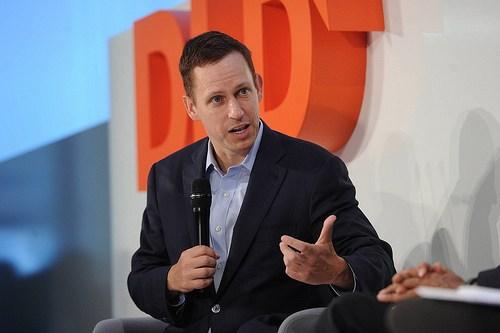

The prevailing thinking is that conservative Republicans are against raising the minimum wage. However, that is not true for all conservative Republicans.
Certainly not for Peter Thiel, the billionaire venture capitalist who co-founded PayPal. Thiel recently said in an interview that he supports a California ballot initiative to raise the minimum wage by fellow conservative Ron Unz. The ballot initiative would raise California’s minimum wage to $12 an hour in 2016. Thiel told the San Francisco Chronicle that he's against raising the minimum wage “in theory,” but in practice he thinks “the alternative to higher minimum wage is that people simply end up going on welfare.” He thinks that raising the minimum wage should be considered “seriously.”
Thiel is a billionaire who, although he identifies as a conservative Libertarian, has given much money to Republican causes. These include $1 million to Club for Growth, an anti-tax group that Politico describes as “tea party aligned,” and almost $4 million to Endorse Liberty PAC for Ron Paul’s 2012 presidential campaign. Thiel even gave campaign contributions to Tea Party favorite Sen. Ted Cruz of Texas in 2012, and Mitt Romney’s 2012 presidential campaign.
Thiel deviates from political lines, however, when it comes to raising the minimum wage. And so does Ron Unz, who argues what he calls the “conservative case for raising the minimum wage,” as he stated in a blog post on his website. Unz hopes that in California, “liberals and conservatives, Democrats and Republicans could come together in a bipartisan coalition to support raising our minimum wage to $12 per hour.”
Thiel and Unz are not the only conservatives calling for the minimum wage to be raised. Last month, Fox News host Bill O’Reilly called for raising the minimum wage. "The Republican Party should really wise up and stop opposing raising the minimum wage. It should be 10 bucks an hour,” O’Reilly said. “The GOP needs to stop working against working people." Phyllis Schlafly also called for raising the minimum wage because it would “elevate many low-wage earners above the income threshold that qualifies them for benefits and should result in reduced welfare spending.”
Some companies are already paying their employees higher minimum wages. Last week, Gap, Inc. announced that it will increase the minimum hourly rate it pays American employees from $9 per hour in 2014 to $10 per hour in 2015. Just one day prior to Gap’s announcement, the Congressional Budget Office released a report about the impacts of raising the federal minimum wage. The CBO report concluded that raising the federal minimum wage to $10.10 an hour would increase the pay and family income for most minimum wage workers.
Image credit: Hubert Burda Media
Unilever and UN Agency Team Up to Support Small Farmers

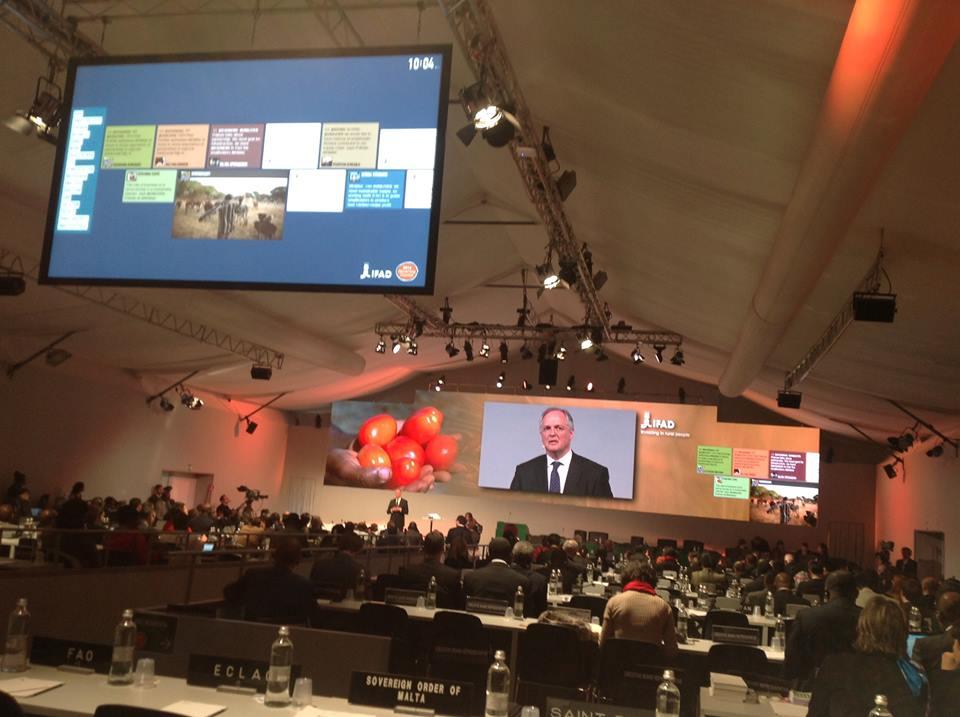
The International Fund on Agricultural Development (IFAD), a financing agency within the U.N., on Feb. 20 stuck a five-year global agreement with Unilever that aims to better train and connect smallholder farmers to the marketplace. The partnership--the first of its kind between IFAD and the private sector--will aid Unilever in reaching its ambitious goal of integrating 500,000 small farmers into its supply chain by 2020 and provide training on sustainable farming methods. The new initiative was announced at IFAD’s annual governing council meeting by Unilever CEO Paul Polman at a panel event called Small Farmers=Big Business.
No specific activities have been announced, and it is unclear where or when the partnership will unroll. So, why is this story even interesting? Two reasons: One, it shows that Unilever is taking food traceability concerns seriously and looking to get a jump over other large multi-nationals on the issue; and two, it shows Polman’s genius in the corporate social responsibility (CSR) realm. The partnership also raises some questions over just how a multi-billion dollar corporation is going to do business with one-acre farms in Timbuktu—an arrangement that often, to say the least, has mixed results.
Food traceability is all about knowing where your food is coming from. It’s no surprise that consumers are more and more interested in the source of their daily bread, with meat recalls and salmonella outbreaks becoming an all too regular occurrence, not to mention issues of underpaid workers, deforestation, pesticides, etc. More and more people—and not just the 401k’d farmers market regulars—want to feel good about what they are buying and eating and, thankfully, companies are responding.
This IFAD partnership is a way for Unilever to respond to these concerns by working with small farmers in India, Indonesia, China and other developing countries. Initial scoping plans for the partnership also include training on more sustainable farming methods, so Unilever can hit the environmental as well as economic development angles.
The question is: Will the Unilever-IFAD program, and others like it, amount to more than a really great marketing story to wrap around packaging?
The impact of this program will of course only be proven in execution, and transparency and sound oversight will be key to the process. As a global company with $68.4 billion in annual turnover, Unilever obviously would have insane leverage over smallholder farmers in any normal transaction. But as a quasi-public agency, IFAD has a responsibility to provide transparency around program protocols and results.
While Unilever has done relatively well to provide transparency to its own sustainability claims (an outside accounting firm audits company metrics, but without much detail on methodology), there is still some marketing sleight of hand. For example, the company claims that it has helped 45 million people gain access to safe drinking water since 2005—by selling its line of water purifiers in India, Bangladesh and other emerging markets with high incidences of water-borne disease. Water purifiers in India are a growth market that bring profit to Unilever and, incidentally, improve consumer health. (Their cheapest model in India is $20; the average monthly per capita income in that country is about $124).
In order for businesses today to survive, they have to think and operate globally and respond to customer concerns about social inequality and environmental health. Still, there is a fine line between business-as-usual and “change the world capitalism”; Unilever is really good at toeing it.
It is no secret that the IFAD initiative will be more than just a transaction between Unilever and shareholder farmers—it's also a brilliant market play. The company needs new customers in the developing world to sustain its growth. The same Sustainable Living Plan that aims to source agricultural materials sustainably and “enhance the livelihoods of people across [the] value chain” also has the company doubling growth by 2020. In order to achieve this, Unilever is taking a profitable volume growth strategy, in large part focused on creating new customers and new products in emerging markets (which account for 55 percent of revenue). The company’s growth is very much tied up in the economic well-being of its current or would-be customers in poor countries. By working with IFAD and smallholder farmers, Unilever is not only making its its supply chain more sustainable, it is also trying to ensure it has a sustainable customer base for years to come.
This is why Paul Polman is the sweetheart of the CSR crowd and investors. He can find that overlapping sliver in the Venn diagram of shareholder concerns (profitable growth) and the concerns of rich world consumers (products traced to fair sources). But what really makes him unique is his ability to play the long-game. He actively seeks out long-term investors as shareholders, rather than speculators looking to make a quick turnaround, which allows him more space to test the running CSR theory that improving the lot of everyone will ultimately yield sustained company returns. He is writing a new script for CEOs, like this quip from a past interview with The Guardian: "I don't think our fiduciary duty is to put shareholders first….if we focus our company on improving the lives of the world's citizens and come up with genuine sustainable solutions….ultimately this will result in good shareholder returns.”
Let’s hope he can prove himself right.
Image Credit: IFAD, Facebook